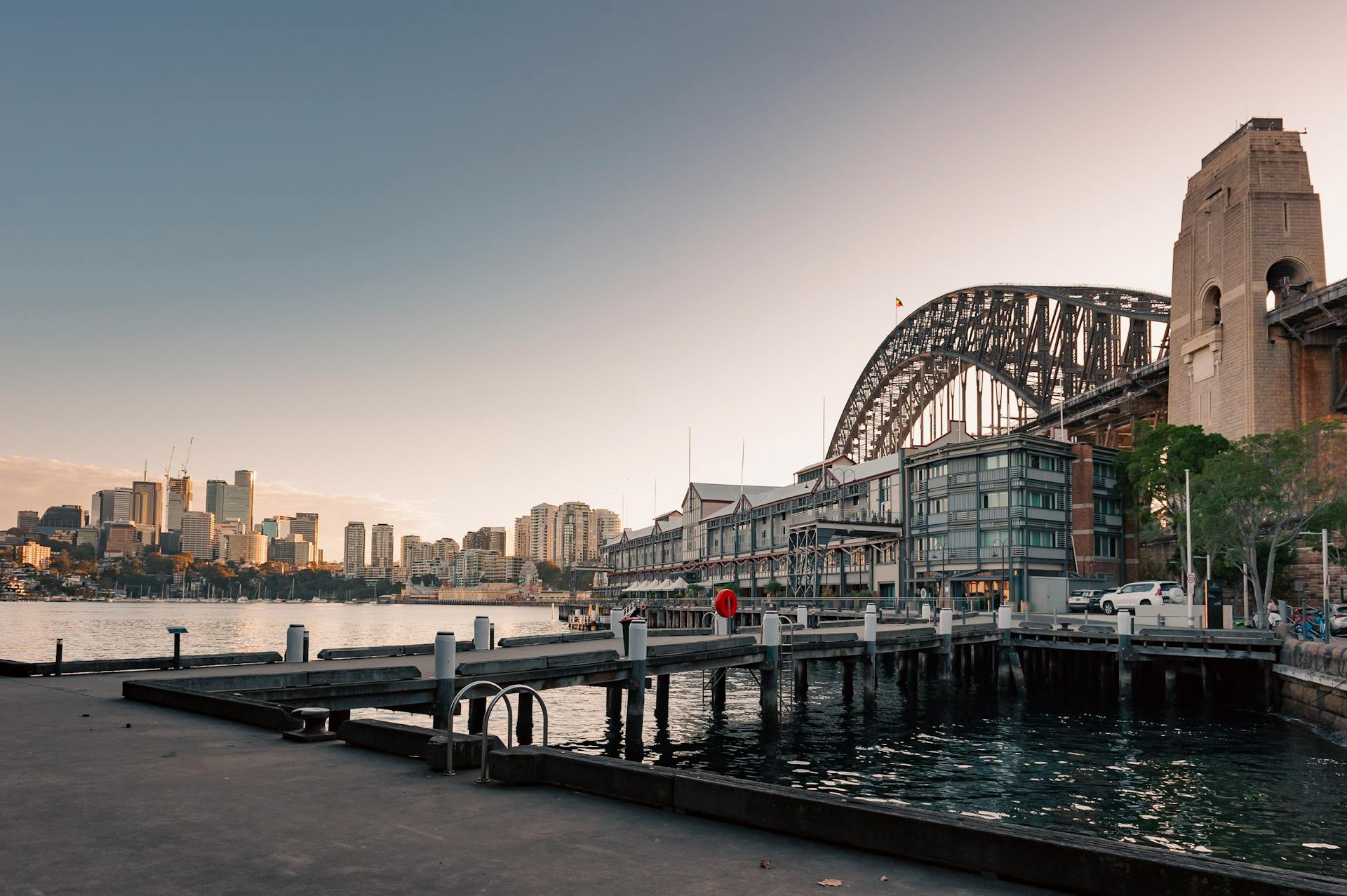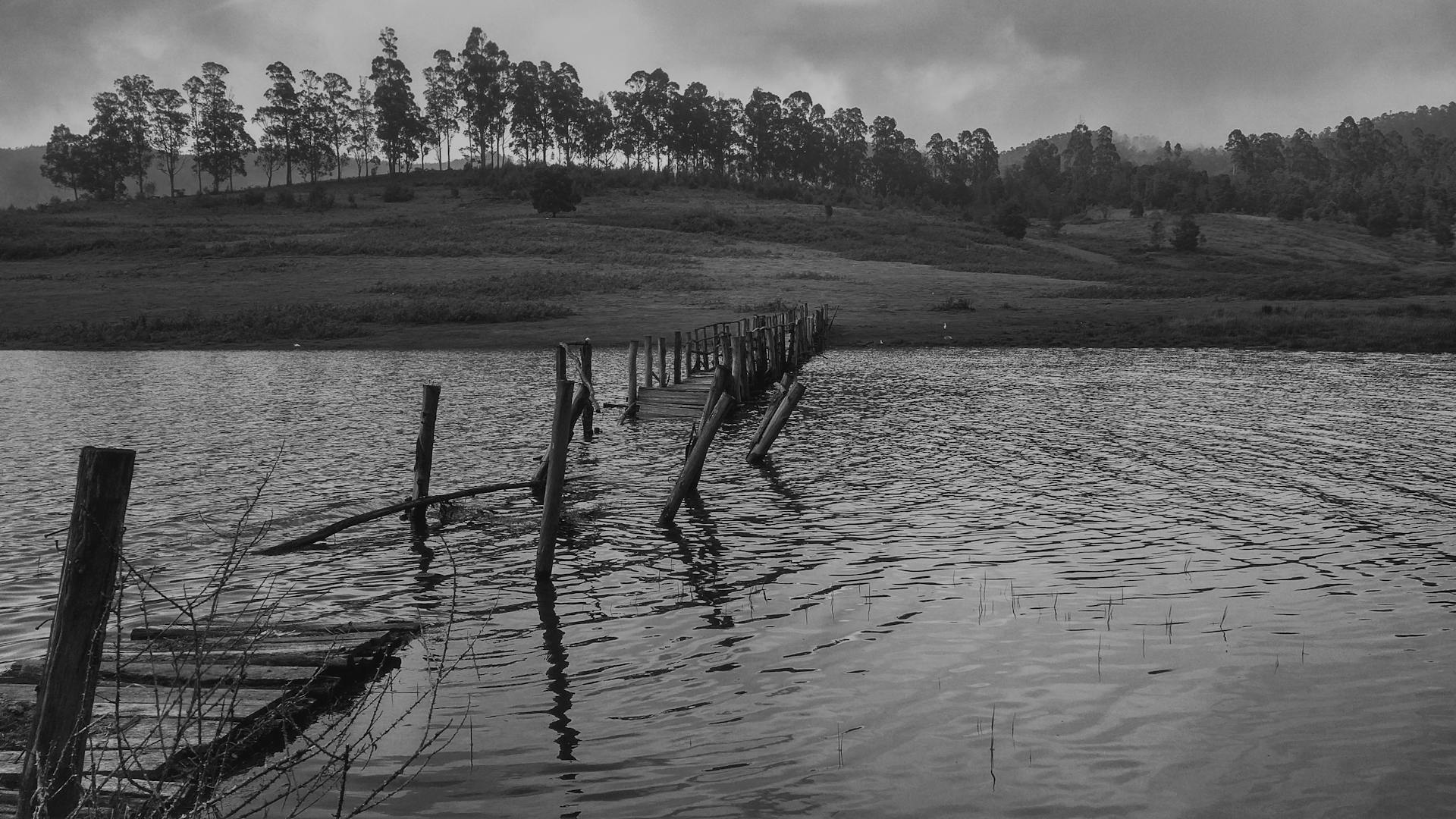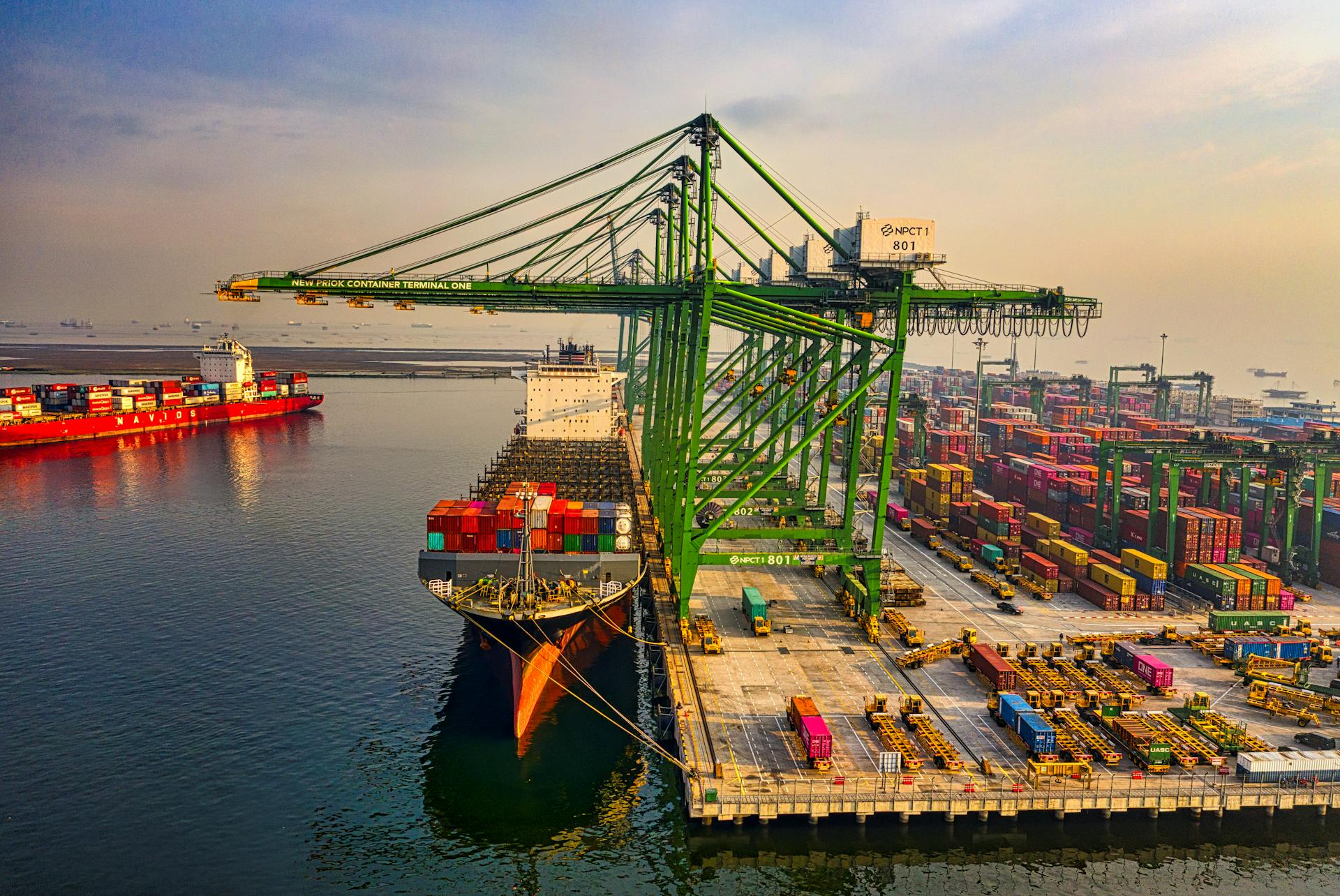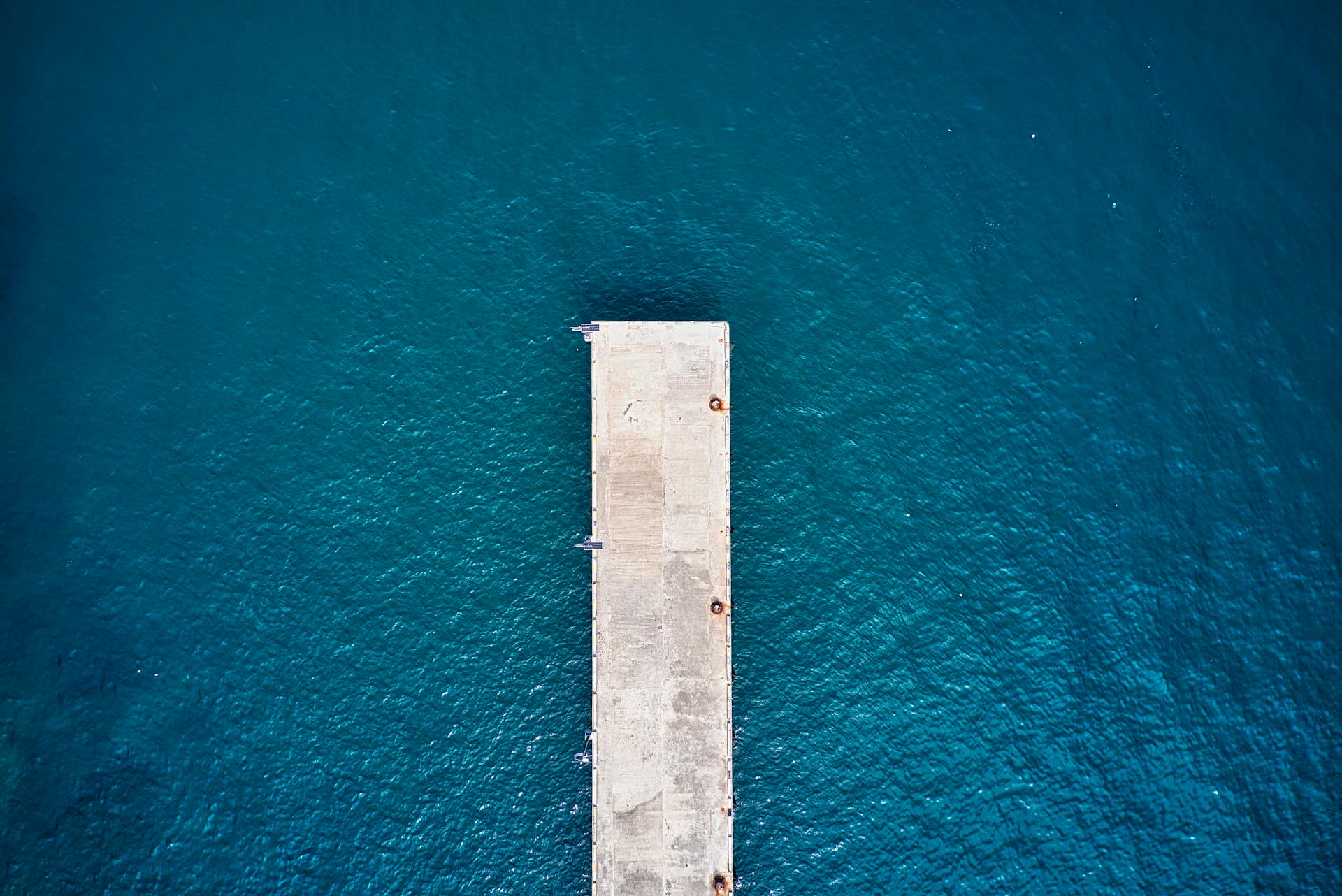
Mort's Dock was a significant industrial site in Balmain, Sydney. It operated from 1855 to 1986.
The dockyard was a major employer in the area, with over 1,000 workers at its peak. They built and repaired ships, including vessels for the Australian Navy.
The dock's strategic location on the Parramatta River made it an ideal spot for shipbuilding and repair.
History
Mort's Dock has a rich and varied history that spans over a century and a half. The site has undergone numerous modifications since its inception.
The construction of the dry dock began in 1853 and was completed in 1855. A stone building was constructed in 1854, which would later be used as an office between 1877 and 1898.
The engineering and blacksmiths works were extended in 1866 to include a patternmakers shop and brass and iron foundries. This expansion marked a significant milestone in the site's development.
The first patent slipway was built in 1868, and a dam was constructed at the Cameron St end of the dry dock in 1870. This dam allowed for the dry dock to be extended to 390 feet in 1874.

A major extension of the dry dock took place in 1898, increasing its length to 640 feet. The company went into liquidation in 1959 and was sold to Sims Metal.
The site was later acquired by ANL, which added a second berth in 1966. However, the northern side of the dry dock was demolished in 1967, despite containing items of historical interest.
The dry dock was eventually filled in, raised, and levelled, and covered with bitumen between 1968 and 1969. The site was then used as a container depot until 1975.
A proposal was made in 1980 to redevelop 7ha of the site as open space park and housing. The development of the park commenced in 1985, with the demolition of the former NAL passenger terminal and associated buildings.
Here is a timeline of the major alterations to the site:
- 1853: Dry dock commenced construction.
- 1854: Stone building constructed.
- 1855: Dry dock completed.
- 1866: Engineering and blacksmiths works extended.
- 1868: First patent slipway built.
- 1870: Dam constructed at Cameron St end of dry dock.
- 1874: Dry dock extended to 390 feet.
- 1877: Stone building used as office.
- 1898: Dry dock extended to 640 feet.
- 1959: Company went into liquidation.
- 1963: ANL acquired part of the site.
- 1966: Second berth added.
- 1967: Northern side of dry dock demolished.
- 1968-1969: Dry dock filled in, raised, and levelled.
- 1975: Container depot closed.
- 1980: Proposal made to redevelop 7ha of site.
- 1985: Development of park commenced.
- 1986: First stage of redevelopment completed.
- 1989: Second stage of redevelopment completed.
Location and Remains
Mort's Dock is located beneath Mort Bay Park, where the archaeological remains of the dry dock and wider site are still buried.

The top of the stone walls of the dry dock remains visible on the ground in the park, giving a glimpse into its past.
The caisson, and stone retaining walls remain in situ, a testament to the site's well-preserved state.
Ships bollards and remnants of the patent slips and later container wharf can also be seen, adding to the site's intactness.
The site has a high degree of integrity due to the infill in the 1960s, which helped preserve its historical features.
People and Places
Mort's Dock was a significant hub for shipbuilding and repair in the 19th century.
The dock was founded by Mort, a skilled shipwright, who had a vision for a facility that could cater to the growing maritime industry.
Mort's Dock was strategically located near the mouth of the River Thames, making it an ideal spot for shipbuilding and repair.
The dockyard employed a large workforce, including skilled craftsmen, laborers, and apprentices.

One of the notable features of Mort's Dock was its dry dock, which was a marvel of engineering at the time.
The dry dock allowed ships to be lifted out of the water for repairs and maintenance, making it a game-changer for the maritime industry.
Mort's Dock was a testament to the ingenuity and innovation of its founder, Mort, who had a deep understanding of the needs of the maritime industry.
The dockyard was also known for its high-quality shipbuilding and repair services, which attracted clients from all over the world.
Mort's Dock played a crucial role in the development of the maritime industry in the 19th century, and its legacy continues to be felt today.
Additional reading: Maritime Salvage Companies
Sources
- https://en.wikipedia.org/wiki/Mort%27s_Dock
- https://heritage.engineersaustralia.org.au/wiki/Place:Morts_Dock
- https://commons.wikimedia.org/wiki/Category:Mort%27s_Dock
- https://monumentaustralia.org.au/themes/technology/industry/display/111731-founding-of-mort%60s-dock
- http://ramin.com.au/travel/morts-dock-balmain-plaque.shtml
Featured Images: pexels.com


